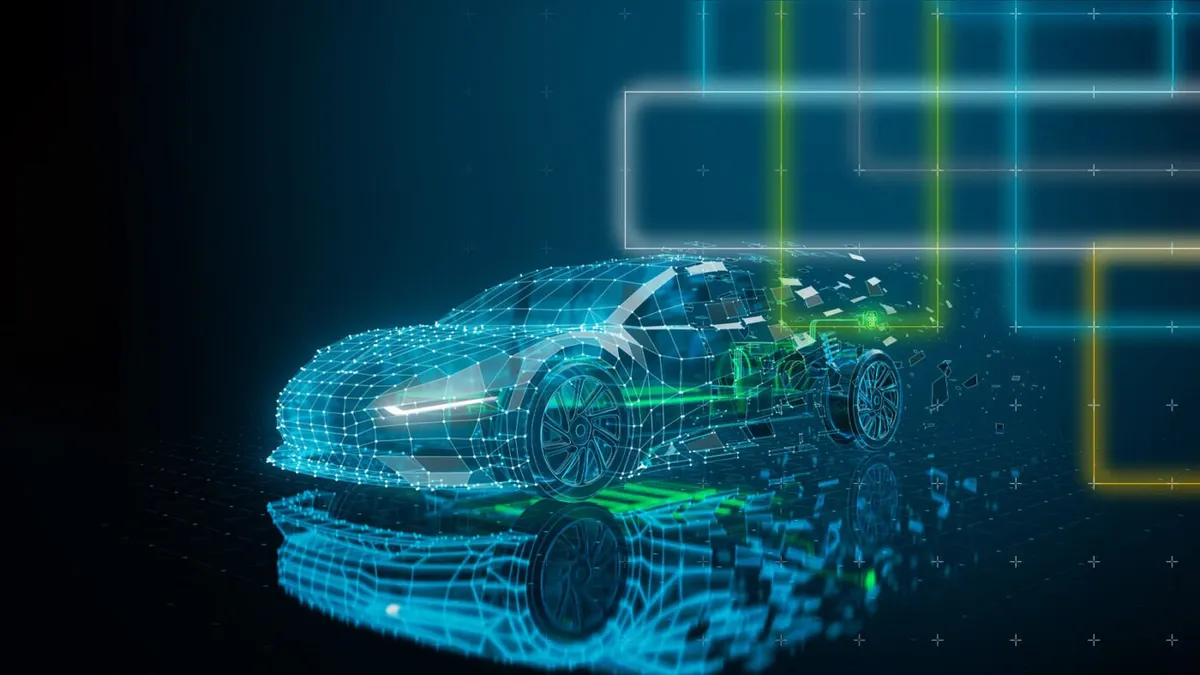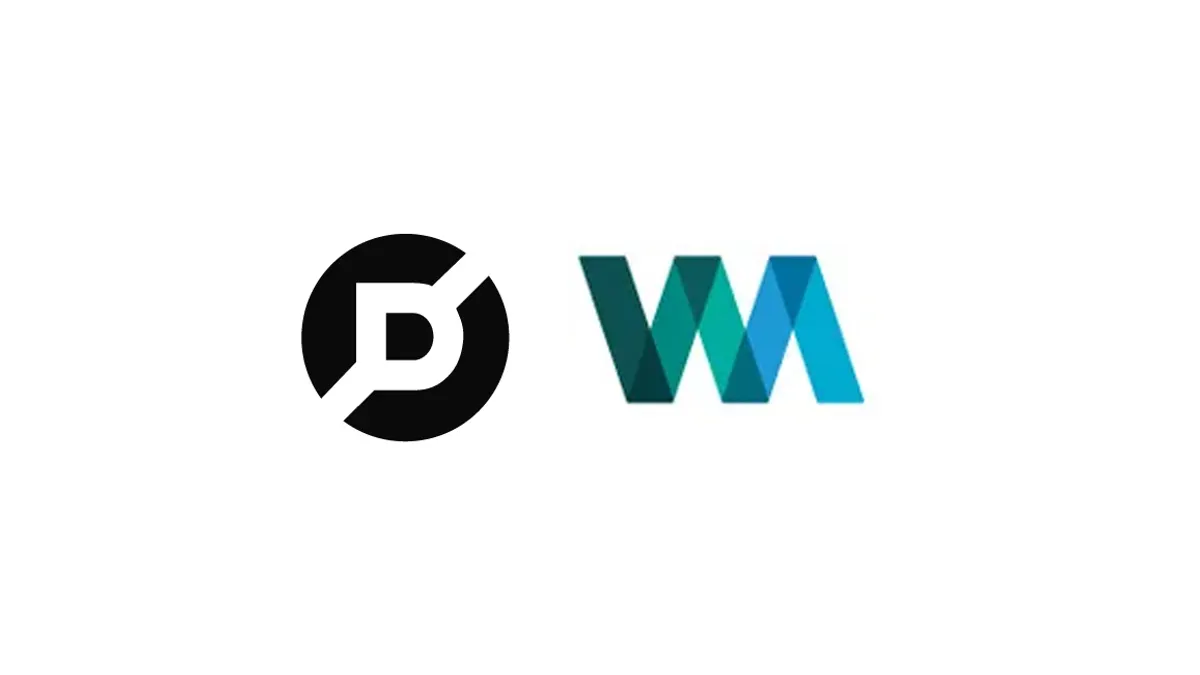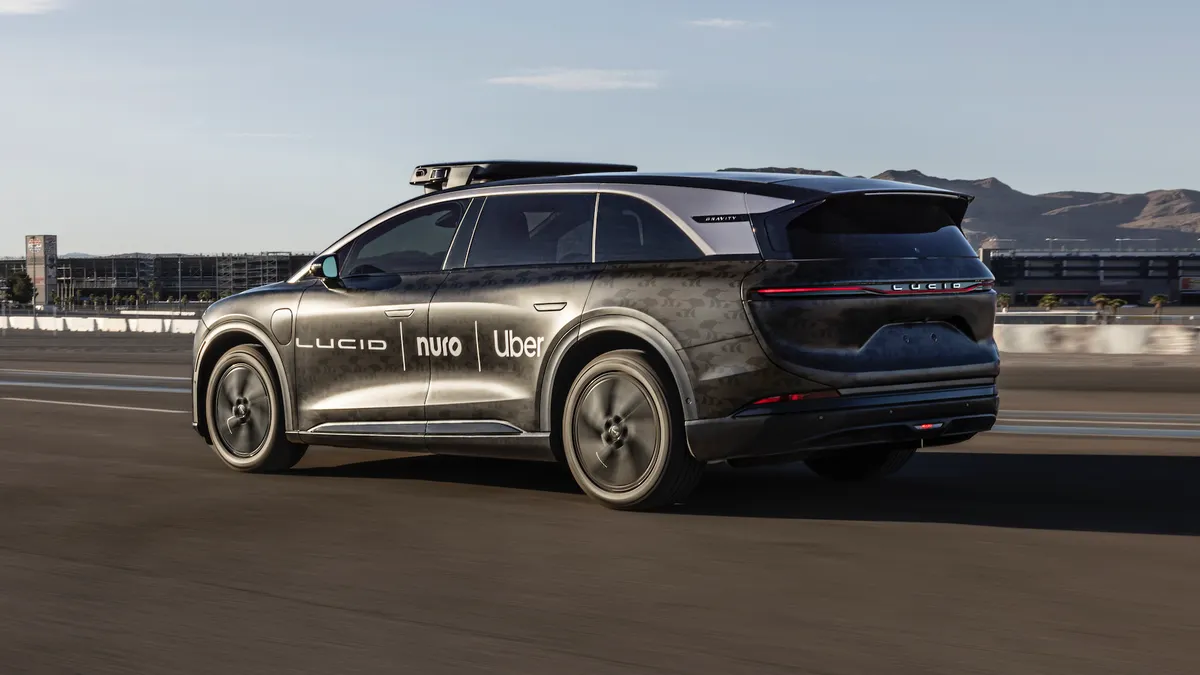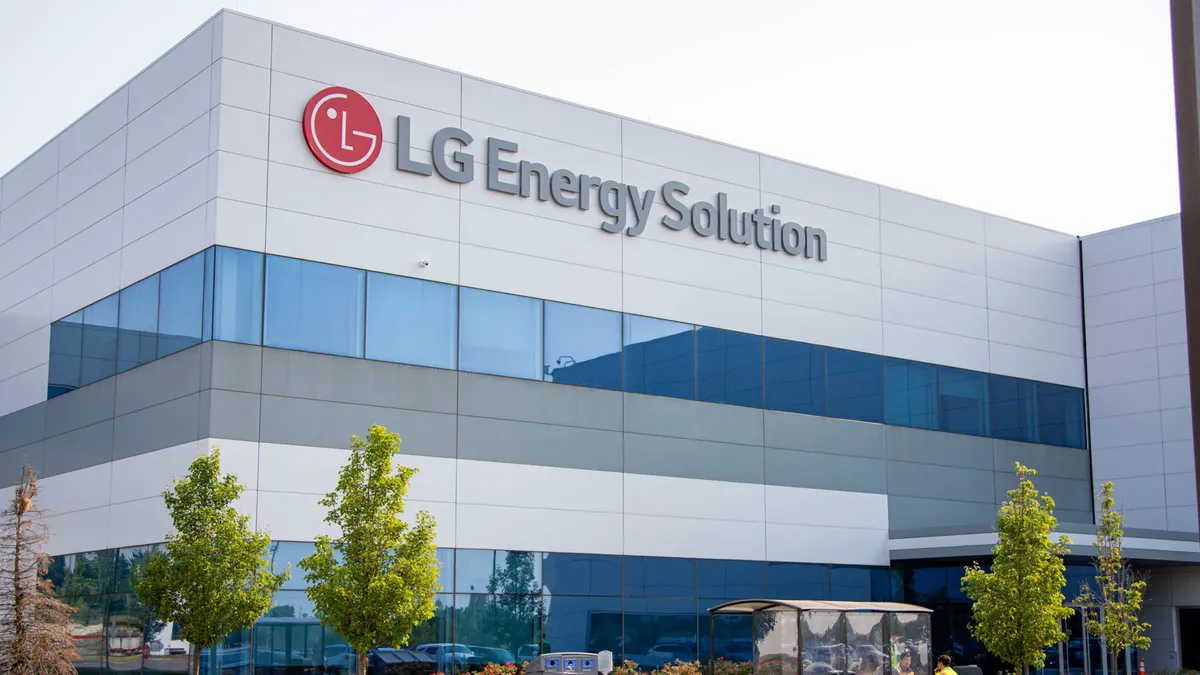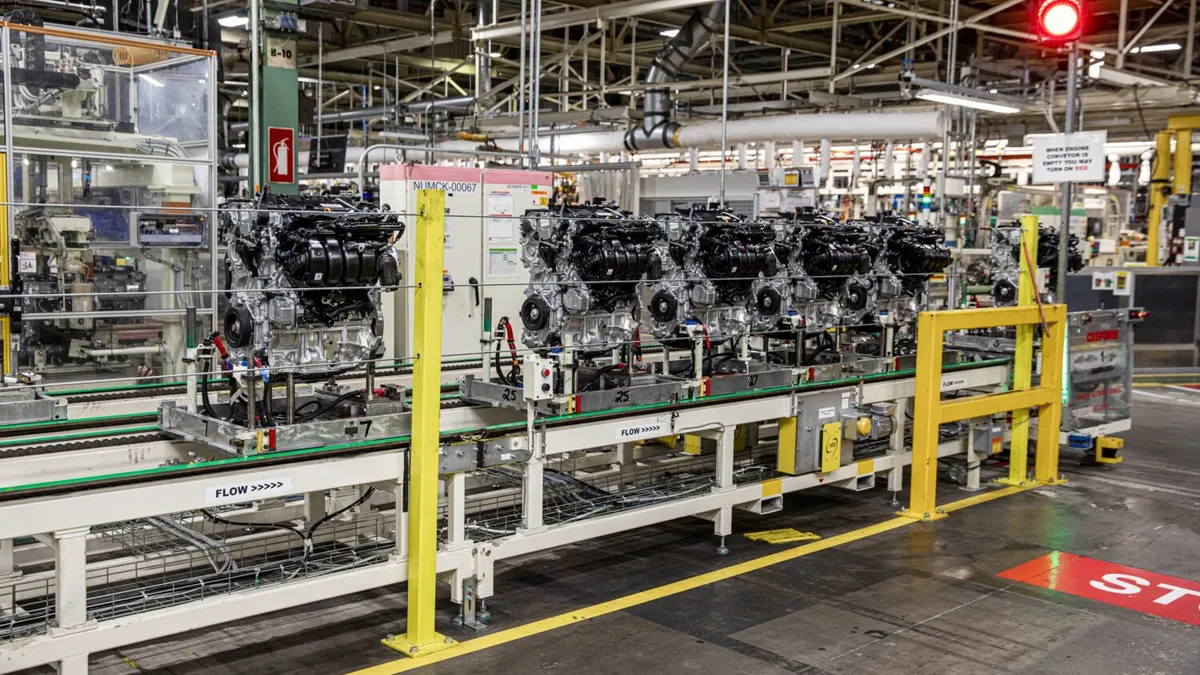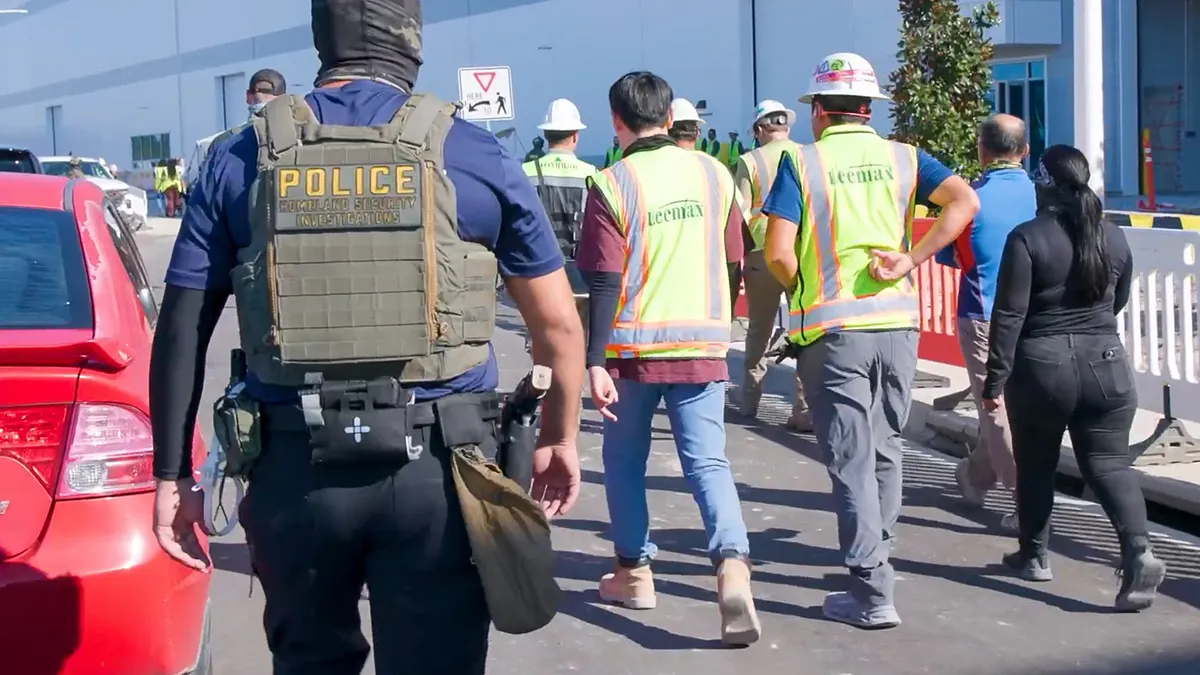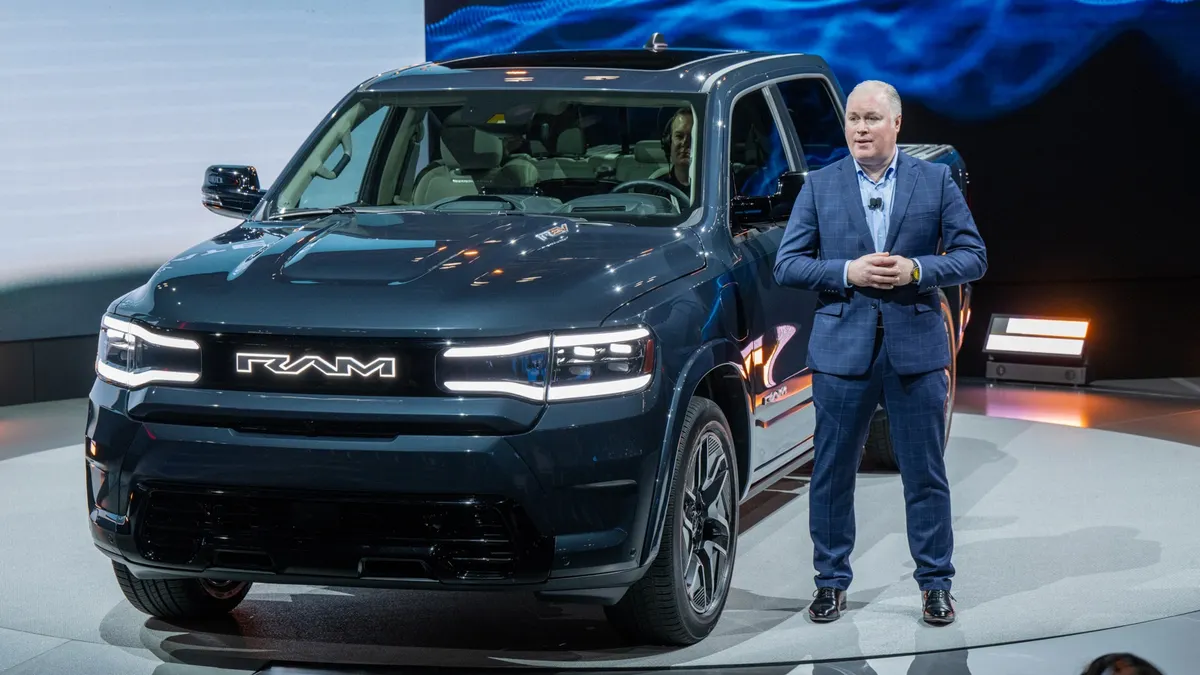NOVI, MICHIGAN — With the auto industry’s shift toward building more connected vehicles powered by software continuously updated over-the-air, OEMs are rapidly moving from hardware-centric vehicle development processes to a software-first approach. This pivot also includes the integration of AI and adoption of a cloud-based development environment for software-based vehicles.
However, to support this transition, legacy automakers still face challenges in data management and technology integration, according to a recent panel discussion on the topic at the AutoTech 2025 conference in Michigan.
The panel, which was moderated by Maite Bezerra, principal analyst for software-defined vehicles at Wards Intelligence, included industry experts from Bosch, Stellantis, Toptal, and the Scalable Open Architecture for Embedded Edge (SOAFEE) industry group, which is working with automakers to expedite development of software-defined vehicles.
SOAFEE aims to create an open source vehicle platform using cloud-native architecture that supports multiple hardware configurations.
A shift toward a cloud development model
“SOAFEE is really kind of more about bringing some of the modern software techniques to automotive software development,” said panelist Robert Day, the group's governing body representative. “Over the last couple or three years, people are actually starting to do their development in the cloud using the tools, technologies and methodologies that are well developed and well used in cloud development.”
Although adopting a cloud-based software development approach is a common practice for developers working in the tech space, it's an entirely new field for some legacy automakers.
"The problem is the car is not the cloud,” said Day. “It has things like safety and things like mutual physicality, heterogeneous computing.”
The software development challenges for automakers also create the need for OEMs to recruit top talent to integrate the technology into next-generation vehicles, often from outside of the industry. Some companies are providing services to expedite such recruitment. For example, Toptal operates a freelancing platform that connects companies with in-demand software engineers and other technology specialists.
“We have a lot of partners in the automotive space,” said panelist Paul Timmermann, VP of product at Toptal.
Stellantis is one of the automakers encountering the challenges of shifting towards SDVs for its future vehicles.
"We [automakers] are always hardware first, and now the switch is happening to, you know, software, and then comes the hardware," said panelist Sangeeta Theru, director of virtual validation platforms at Stellantis. “Tools, processes…everything is changing,” she said.
Theru also highlighted the importance of training internal teams at Stellantis, adding that the automaker recently launched "big training on AWS cloud and architecture” for employees. “There was a lot of effort in upskilling and training internal people,” she said.
Automakers building SDVs must be adept at managing large data sets
A major driver of increasing vehicle complexity is automakers launching more advanced driver assist systems and autonomous driving functionality using AI-powered software, according to the panelists.
Vehicles with automated driving capabilities, for example, are equipped with dozens of cameras and sensors, generating "many, many terabytes of data" for a single car, scaling to "well beyond petabytes" across large fleets, explained panelist Steven Miller, product management of ADAS and technical expert at Bosch.
“Clearly you're not going to upload all of that data,” he said. “The other even harder data problem is okay, what's the right data to upload to the cloud?”
With rollout of more advanced autonomous driving features, automakers need to be adept at processing and merging extremely large data sets. One of these challenges is processing high volumes of vehicle data in real-time, as well as making it more manageable to transfer to and from the cloud.
Automakers must also decide which vehicle data to upload to the cloud to train AI models. Therefore, the panelists emphasized the need for OEMs to create efficient data pipelines to manage this complexity. The panelists also foresee AI being integrated into other vehicle systems, such as remote diagnostics and infotainment. The use of AI will also likely extend to corporate organizational processes.
"This is one of the most transformational shifts that we are seeing in the automotive industry," said Bezerra.
Using software with a higher degree of standardization
The panel discussion also delved into automakers’ adopting open source software with a higher level of standardization to reduce development times and costs.
In November 2024, Panasonic Automotive Systems and Arm announced a collaboration to standardize automotive architecture. The two companies said they recognized the need for the industry to shift from a hardware-centric to a software-first development model to address challenges created by high-cost, vendor-specific proprietary interfaces for vehicles.
While the use of open source automotive software has traditionally been met with caution due to safety and liability concerns, an April 2025 report from the Eclipse Foundation found a significant jump in industry appetite to use it for safety-critical vehicle systems. According to the report, 79% of automotive software professionals currently use open source tools and/or in-vehicle software for development, and the number of users actively contributing to open source projects increased by 4% from last year.
The big advantage of open source is it provides a standard between companies, explained Day. “If you're starting to use open standard or open source, it makes that collaboration easier,” he said.
Day also highlighted another long-term strategy decision facing OEMs. "What would you choose to open source first? What would you actually keep in-house?" he said.
Despite the prospects of adopting open source software for vehicles, the panelists acknowledged that some key areas needed more attention, including cybersecurity. This area is even more critical for automated driving and connected infotainment systems that can be used to pay for goods and services, such as EV charging sessions.
Day raised a critical point about security. “I don't think it's placed enough attention to, and certainly don't think [automakers] spend enough money on it,” he said.
According to chipmaker Arm, a modern vehicle can have up to 650 million lines of code, and this number will only increase in the future. But software will revolutionize how drivers interact with their vehicles and redefine the relationship between OEMs and vehicle owners, according to the company.
Disclosure: AutoTech2025 is run by Informa, which owns a controlling stake in Informa TechTarget, the publisher behind Automotive Dive. Informa has no influence over Automotive Dive’s coverage.



